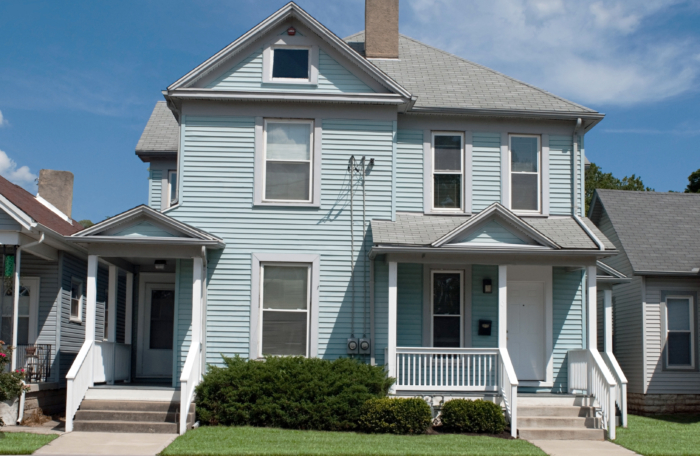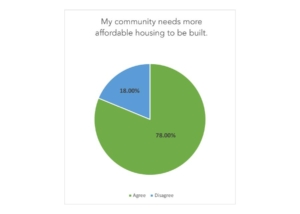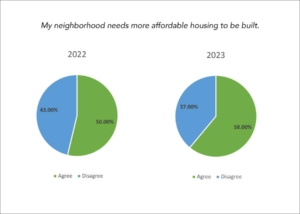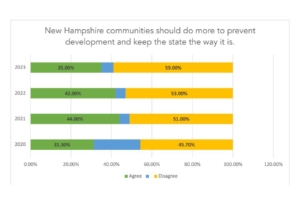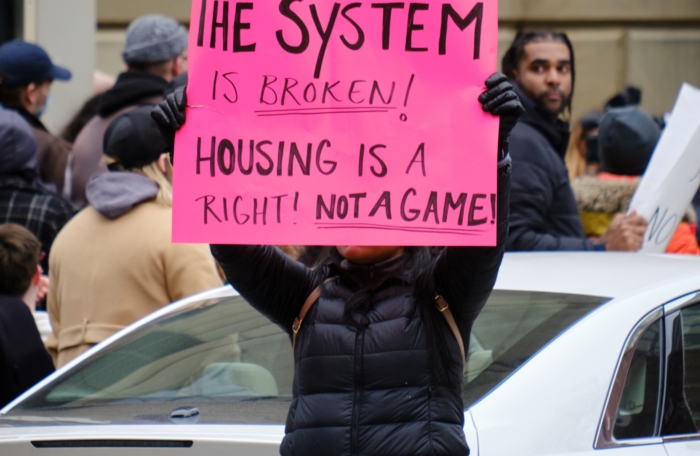New Hampshire Attorney General John Formella has joined 16 other state attorneys general in the Federal Trade Commission’s (FTC) lawsuit alleging that “Amazon is a monopolist” that engages in illegal anti-competitive behavior.
But a close read of FTC Chairwoman Lina Khan’s suit reveals a confused and ultimately unconvincing case that Amazon (a) is a monopoly player and (b) has harmed consumers.
If the FTC prevails in this legal case, it appears likely that consumers and small businesses, including the 4,500 small-to-medium-sized New Hampshire businesses that sell on Amazon and the many thousands of Granite Staters who shop online, will be harmed, not helped.
The lawsuit makes two primary claims. The first is that “Amazon is a monopolist.”
Therefore, the first test of the lawsuit’s merits is whether this statement is accurate.
Monopoly
In a free, competitive market, not all competitors succeed or survive. Innovators regularly surge past existing players to gain large market share, becoming temporarily dominant. Though this is a natural function of a competitive market, some see this simple economic fact as evidence that a particular market is not competitive, confusing competition with the actual number of competitors at a given point in time.
This misunderstanding is at the heart of the FTC’s lawsuit against Amazon.
“Monopoly exists when a specific individual or enterprise has sufficient control over a particular product or service to determine significantly the terms on which other individuals shall have access to it,” Nobel-winning economist Milton Friedman wrote in Capitalism and Freedom. Amazon clearly is not a monopolist under Friedman’s definition. What about the FTC’s definition?
The FTC’s website offers guidance outlining the legal steps required under U.S. antitrust law to prove that a company is a monopolist.
“As a first step, courts ask if the firm has ‘monopoly power’ in any market,” the FTC explains. “This requires in-depth study of the products sold by the leading firm, and any alternative products consumers may turn to if the firm attempted to raise prices.”
To be a monopolist, the FTC must prove that the company has (1) “monopoly power” in a market and (2) achieved or held onto its leading position in the market through “improper conduct.”
Even if a company has a large market share (typically over 50%), that market share has to be durable and has to preclude competitors from entering or, once entered, offering products and services at low prices.
The existence of competitively priced alternatives readily available to consumers in the market would be one way to demonstrate that a dominant player is not, in fact, a monopolist.
Amazon clearly does not exert monopoly control over the U.S. retail marketplace. In 2022, only 14.5% of all retail sales in the United States were online. The rest (85.5%) were done in brick-and-mortar stores.
Walmart, not Amazon, is the top American retailer, with a nearly 17% share of the retail market, followed by Amazon’s 14.28% share, CVS’s 8.96%, Costco’s 6.51%, and Home Depot’s 4.37%.
So, Amazon is hardly a retail monopoly.
What about online commerce? Amazon is the number one e-commerce company in the world. Does that make it a monopolist?
Amazon accounted for 37.8% of all online sales in the United States in 2022. E-commerce data company PYMNTS pegs its share of e-commerce spending in 2023 at 48%. That’s a lot, but a monopoly it does not make.
Walmart, Apple, eBay, and Target round out the top five online U.S. retailers. Despite Amazon accounting for the greatest share of e-commerce sales, Walmart.com, eBay.com, and AliExpress.com are the three most visited e-commerce websites. Etsy.com, Samsung.com, PlayStation.com, and BestBuy.com remain popular sites as well.
Though Amazon is the largest player (at the moment), it faces real competition. Before the FTC lawsuit was filed, Supermarket News reported this summer that Walmart’s share of online retail sales grew from 5.7% to 6.7%—a 17% increase—in the first quarter of the year. Amazon’s share grew from 43.7% to 47.9%—a 9% increase. Walmart’s comparable e-commerce sales grew by 27%. In the second quarter of this year, Walmart’s global e-commerce sales were up 24%.
If Amazon has achieved an illegal level of market dominance, one would expect its competitors to be losing revenue and market share. But its largest competitor, Walmart, posted $573 billion in revenue in 2022 versus Amazon’s $514 billion. And Walmart’s share of online retail commerce is growing, not shrinking. Its stock is up 13.5% this year. For an alleged victim of an illegally dominant monopoly player, it’s doing extremely well.
The FTC clearly understands this fundamental issue with its case, which is why the agency very carefully alleges that Amazon has a monopoly over “the online superstore market and the market for online marketplace services.”
As these are two innovations that Amazon pioneered, it’s to be expected that the company maintains a large lead in these areas. That in itself is not a violation of U.S. antitrust law. But defining Amazon’s market in such a novel, limited, and arbitrary fashion is the only way the FTC can possibly claim that Amazon holds monopoly power.
As Peter Jacobsen at the Foundation for Economic Education writes: “Notice how important these words are for the FTC. If you remove the word ‘online’ then clearly Amazon has no monopoly. There are lots of superstores. If you remove the word ‘superstore,’ again there is no monopoly. Amazon does not have a monopoly on online stores.”
That’s precisely why the FTC asserts that “brick-and-mortar stores and online stores with a more limited selection are not reasonably interchangeable with online superstores for the same purposes and are thus properly excluded from the online superstore market.”
That’s a neat trick. The FTC deliberately excluded the markets where most American retail transactions occur so it could articulate the existence of a completely separate market ruled by Amazon. But the “online superstore” market is not a meaningfully distinct market. It’s just one part of a broader American retail market.
The FTC’s attempt to invent a distinct online superstore market is undermined by actual consumer behavior. PYMNTS reports that 28% of U.S. consumers have used a cell phone to assist with shopping while in a brick-and-mortar store, with 9% comparing the in-store price to prices offered by other merchants.
The FTC might consider online superstores a distinct and separate market, but consumers do not.
It’s not even clear precisely what an “online superstore” is. The Merriam-Webster dictionary defines “superstore” as “a very large store often offering a wide variety of merchandise for sale.” The FTC devotes several pages to attempting to define “online superstore.” It concludes by claiming that online superstores are so attractive that consumers won’t even shop at other types of online stores, even if they offer lower prices.
“Even though such stores may price certain items comparably with online superstores, shoppers do not seriously consider those stores as reasonable alternatives to online superstores for a significant portion of their shopping needs.”
Again, real life contradicts the FTC’s claim. The Internet is full of online retail outlets that aren’t superstores and yet somehow manage to have customers. In 2022, the fastest-growing e-commerce site was not a superstore, but a clothing store. In fact, 10 of the 15 fastest-growing e-commerce sites last year were not superstores. Consumers do not always prefer superstores, either online or in person.
“Online stores that sell unique, can’t-get-anywhere-else products will always have an edge over the mass-produced goods you find on Amazon,” e-commerce services provider Shopify notes, further undermining the FTC’s case.
The FTC supports its narrow market definition by arguing that “[o]nline superstores are distinct from, and not reasonably interchangeable with, brick-and-mortar stores. From start to finish, online superstores provide a vastly different shopping experience from physical stores.”
The fact that online superstores provide a different experience for shoppers is an inherent feature of a competitive retail market.
Anti-competitive practices
The FTC attempts to buttress its claims by asserting that Amazon has engaged in “anti-competitive” practices. It does this primarily by making a case against certain requirements and practices deployed by Amazon to govern its own Amazon Marketplace. However, the FTC doesn’t conclude its case with a convincing demonstration of consumer harm.
A study by Profitero of about 15,000 products sold online found that Amazon had the lowest online prices compared to 13 other major retailers in the United States. In fact, Amazon’s prices were, on average, 13% below rivals like Target and Walmart.
If Amazon offers consumers low prices, then what’s the FTC’s beef? The agency claims that Amazon leverages its Amazon Prime service to attract more consumers and to coerce sellers who choose to sell on Amazon Marketplace to use its fulfillment service, Fulfillment by Amazon (FBA). The agency deems this to be anti-competitive behavior.
But Amazon cannot compel anyone to use its marketplace. It offers incentives instead. For consumers, a wide variety of low-price products delivered quickly is the appeal. For sellers, access to a huge market of engaged customers is the appeal.
Amazon’s fulfillment service is valuable to sellers because it lets them outsource services such as warehousing and packaging to Amazon directly, saving time and resources on the back end.
FBA also offers access to Amazon’s Prime delivery service. Prime is valuable to sellers because it provides value to consumers.
The FTC claims that “the Prime subscription fee makes subscribers feel as though they must make the subscription fee worth it by making more purchases on Amazon.”
In other words, incentivizing subscribers to purchase more products on its platform as opposed to shopping on competitors’ platforms is anti-competitive and monopolistic. So, creating value for consumers is…anti-competitive?
Many retailers use similar rewards systems. Big-box stores such as BJ’s and Costco have up-front membership fees similar to Amazon’s Prime fee. Coffee shops, fast-food restaurants, and many other retailers offer rewards points and programs to encourage customer loyalty. Rewarding repeat business with discounts or enhanced services is not unique to Amazon.
“Forcing sellers to use FBA to obtain Prime eligibility impedes competition and the growth of independent fulfillment providers,” the FTC claims.
The FTC is complaining that Amazon wants to control the packaging, warehousing, and delivery of products offered under its own branded loyalty program on its own website. But ask any restaurant owner about their experience with Grubhub or DoorDash, and it’s easy to see why Amazon would want to control this end of its business. It’s the only way to ensure quality.
Amazon can have a perfectly legitimate business reason for not allowing another company to offer fulfillment services under the Amazon Prime brand. The FTC pretends that the only possible outcome of such a policy is to reduce competition, when in fact an obvious outcome is that Amazon can maintain a consistent, quality experience for both consumers and sellers.
And, again, Amazon doesn’t force sellers to use its fulfillment service. But if sellers want to take advantage of the Amazon Prime brand, as many do, then Amazon has every right to couple FBA with its Prime service, as they go hand-in-hand.
Offering Prime as part of FBA is a chief way in which Amazon distinguishes itself from other independent fulfillment providers. If these competitors’ survival depends on how well they compete with Amazon Prime, how is that anti-competitive behavior on Amazon’s part?
The FTC also argues that “Amazon raises sellers’ costs by forcing them to split their inventory to sell across multiple sales channels.” What the FTC means is that a retailer who wants to sell on Amazon Marketplace, as well as Walmart or eBay marketplaces simultaneously, must divide its inventory among separate warehouses and fulfillment services.
It neglects to mention that it’s the seller’s own choice to split inventory in order to access Amazon’s extensive consumer base while also selling through other channels. No one has to sell on Amazon Marketplace. It’s a choice, and that choice comes with tradeoffs. If retailers don’t think the tradeoff is worth it, they have many other options.
Contrary to the FTC’s assertions, Amazon doesn’t force sellers to use its fulfillment service or split their inventories. Rather, sellers do it because of the value added.
As the lawsuit makes clear, the FTC envisions an imaginary “perfect” market where every company that enters can survive and thrive by selling similar products for similar prices while not one competitor tries to gain a competitive edge over the others. But no such fantasy market exists. And if one did, its consumers would be harmed by the absence of aggressive competitors who seek dominant market share.
“Throughout the history of anti-trust prosecutions, there has been an unresolved confusion between what is detrimental to competition and what is detrimental to competitors,” economist Thomas Sowell writes in Basic Economics. “In the midst of this confusion, the question of what is beneficial to the consumer has often been lost sight of.”
Sowell’s point applies to the FTC’s lawsuit. There’s no disputing that Amazon is a giant corporation. But big doesn’t automatically equal bad. What’s important is identifying consumer harm. The FTC has failed to do this.
The agency fails to demonstrate that Amazon is a monopoly or that its alleged anti-competitive practices have, on net, harmed consumers or sellers.
The changes to Amazon’s practices that the FTC wants to see would likely raise prices and reduce service quality and consistency—all in order for the company to be deemed “competitive” in a made-up market that the agency invented.
It’s a disappointment that New Hampshire has joined a lawsuit with so many obvious flaws and with so many potential downsides for consumers.


